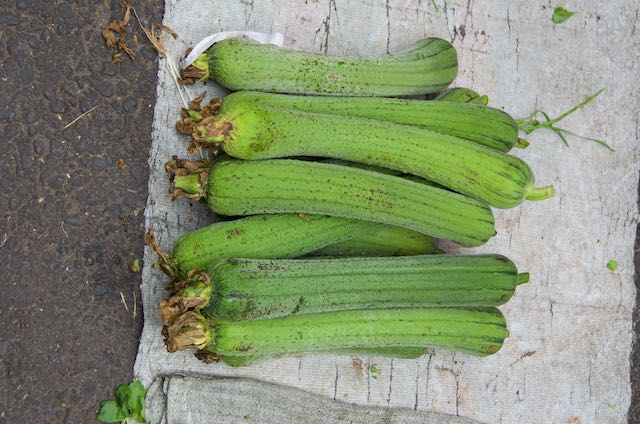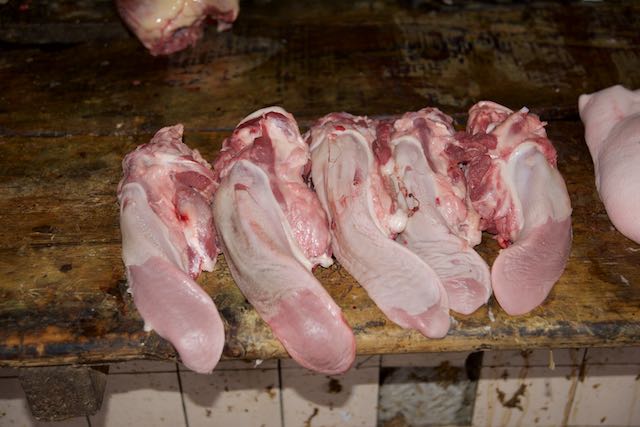Today was to be principally a day of travel with our final destination at the end of the day being the capital city of Sichuan Province, Chengdu.
All fifteen of us plus our voluminous luggage were judiciously packed into two small vans and like sardines we headed off for Leshan which is about 40 km from Emei.
Even at this reasonably early hour the traffic was highly congested and our drivers performed ‘dodgem’ car manoeuvres to duck and weave in amongst the cars, buses, trucks, bicycles and pedestrians. In China all pedestrian crossings are utterly ignored by drivers and crossing the road on foot requires courage, determination and cautiously selecting the opportune moment.
Although Emei and Leshan are separate cities, on either side of the main highway connecting them we viewed continual housing and industry as far as the eye could see.
On arrival at Leshan we purchased tickets and boarded an old 30 m steel river boat and proceeded down the Mingjiang River towards the site of the centuries old Dafo, the largest Buddha in the world. After the recent tragic accident on the Yangtze we were all issued with life-jackets and instructed to put them on before we left the river bank. We were pleased about this as our old boat had certainly seen better days and the river was wide, muddy and fast flowing. The boat had about sixty passengers and nearly all went up onto the upper deck which would not have enhanced the vessel’s stability.
The giant Buddha was carved out of the vertical cliff face sandstone rock of Mt. Lingyan on the banks of the river which is one of the upper tributaries of the Yangtze River. The enormous rock structure of a seated Buddha is 71 m high and was carved under the leadership of the monk Hai Tong during the Tang Dynasty period between 713 and 803 AD. Even from a close viewing position on the river, the head of Buddha, way above us was partly obscured due to the prevalent smog within this city.
Rather than viewing the Buddha from the water, visitors can also cross the river and then from a high point near the head, descend on a carved stone, steep stairway to reach a viewing platform near the Buddha’s feet.
Quite close on either side of the giant Buddha there are two smaller (20 m) carvings into the rock face depicting other Buddhist figures.
On returning to the wharf we then spent the next two hours wandering around the Leshan market area, a totally fascinating experience.
The wares on sale included a wide variety of fruits, nuts and spices plus meats from all manner of animal.
There were a dozen or so species of live fish including eels in big buckets, turtles, tortoises and bags of toads all for sale. The butchers’ area had for sale racks of less than appetising meat such as poultry parts, tongues, trotters, livers, intestines and other unidentifiable offal. Somewhat surprisingly there did not seem to be any flies on the meat carcasses and gutted fish dangling along the street’s edge.
We had a lunch break and then crammed into our vans once more and headed for the railway station with Chengdu being our destination.
To our chagrin we found that our express train to Chengdu had been incorrectly booked and we subsequently had a four hour wait until 5.00 pm before it left.
The 190 km trip from Leshan to Chengdu took one hour on the very modern and comfortable express train which averaged 195 km/h. This is comparably slow when you realise that the Chinese Bullet trains have speeds of over 350 km/h.
The massive Chengdu Railway station was quite new and remarkably clean. We transferred through a security check (these happen on most stations) and then caught the sub-way to the Quingyang District to then walk the best part of a kilometre to the Cheng Du Flower Hotel. The city appears to be very modern and the street architecture where we’re staying is most attractive. The shops and luxury cars that abound indicate that this is a wealthy region of China.
A quick check-in to our hotel and within 15 minutes we were out the door and racing for a local bus to take us to the Sichuan Opera.
This occurs in a special theatre and features Chinese music, singing, dancing, puppetry and acrobatics all performed with magnificent costumes and a stunning light show using smoke, rain, fire and lasers.
There were some incredibly impressive events but most unusual were the ‘Face Changing’ dances. Five members of the large cast did a series of dances and as they twirled across the stage their face masks changed in both colour and form and this seemingly occurred in a fraction of a second. The puppeteer was the star of the show and had his puppet princess held high above him on controlling rods and had her change her masks several times and eventually breathe fire.
We returned to our hotel, negotiating our way across streets dodging motorbikes with no lights on. Back at our hotel, it was time for a shower, a coffee and preparing for tomorrow’s day at the nearby Chengdu Research Base of Giant Panda Breeding.



















